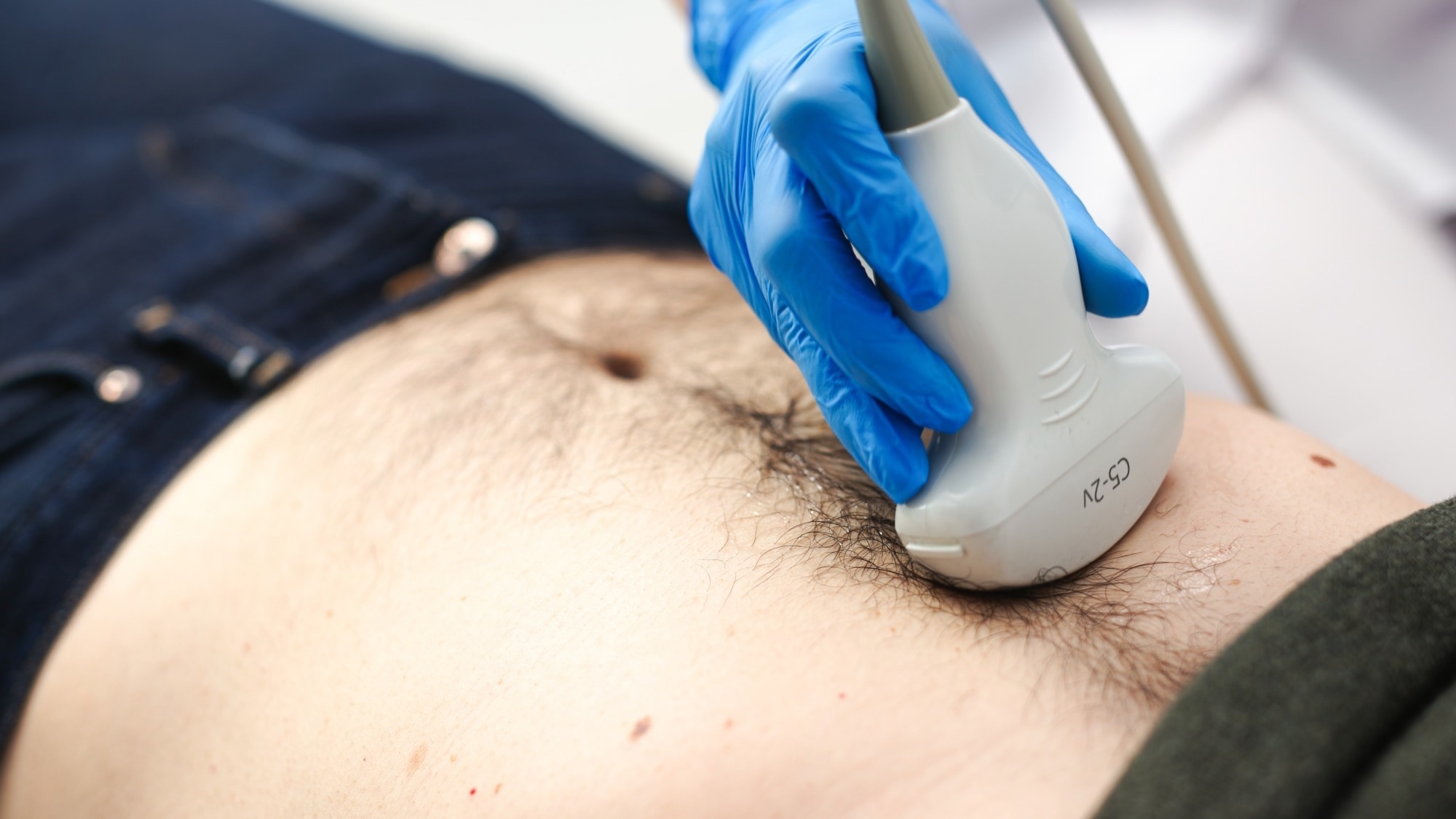 By Pooja Toshniwal PahariaReviewed by Lauren HardakerNov 6 2025
By Pooja Toshniwal PahariaReviewed by Lauren HardakerNov 6 2025By combining multi-lens technology with ultrasound localization microscopy, scientists have achieved real-time, whole-organ imaging that could redefine how doctors detect cardiovascular, kidney, and liver diseases.
 Image credit: wedmoments.stock/Shutterstock.com
Image credit: wedmoments.stock/Shutterstock.com
In a recent Nature Communications study, researchers introduced a multi-lens ultrasound array capable of capturing detailed, three-dimensional maps of microvascular networks across entire organs. When paired with ultrasound localization microscopy (ULM), the system delivers approximately tenfold higher resolution than standard ultrasound, offering a novel, cost-effective, and non-invasive approach to visualize blood flow and tissue microcirculation.
Microcirculation sustains tissue health by facilitating the exchange of oxygen and nutrients, but disruptions in the vascular architecture can lead to organ failure and chronic disease. While computed tomography (CT) and magnetic resonance imaging (MRI) angiography can visualize blood vessels, static imaging, cost, and resolution limit their use.
Ultrasound offers a real-time, non-invasive option, but cannot capture fine microvascular details. Although 3D ULM achieves microscopic precision in small animals, the limited imaging range and complex hardware requirements restrict its application to human-scale organs or clinical use.
Building An Ultrasound for Whole Organs
In the study, researchers developed and validated an advanced multi-lens ultrasound array system for whole-organ visualization of the vascular system, integrating large-aperture piezoelectric elements with diverging lenses for high-resolution 3D imaging.
The multi-lens array probe measured 82 x 104 mm². It contained 252 piezocomposite elements (4.5 × 4.5 mm² each), paired with plano-convex and plano-concave lenses, which produced a diverging acoustic effect that widened the field of view and enhanced image resolution. Simulations using the k-Wave and Field II toolboxes modeled acoustic field propagation and sensitivity, confirming superior energy transmission and broader coverage compared to dense and sparse matrix arrays of similar frequency (1.0 MHz).
Validation followed a multistage approach: numerical simulations, in vitro flow phantoms, ex vivo swine hearts, and in vivo imaging of swine kidneys and livers. The team used flow phantoms with microbubble contrast agents to evaluate flow dynamics under controlled flow rates, while ex vivo and in vivo experiments demonstrated organ imaging capabilities. During live imaging, the probe was fixed and stabilized with a mechanical arm, and imaging was synchronized with electrocardiogram (ECG) and respiratory signals to minimize motion artifacts.
The researchers conducted ultrafast 3D ultrasound imaging using 16 sequential transmissions at a pulse repetition frequency of 5,000 Hz, achieving a volumetric rate of 312 Hz. Motion correction and intensity-based registration algorithms enabled accurate reconstruction of 3D power Doppler and microbubble localization maps. The system generated submillimeter-scale (125 to 200 µm) maps of the renal and hepatic vascular trees to evaluate flow dynamics and vessel behavior.
From Lab Tests to Live Organs
The study demonstrated strong performance of the newly developed system in achieving organ-level 3D mapping of vascular morphology. Results from simulations, in vitro assessment, and preclinical studies confirmed its high sensitivity, spatial precision, and wide-field imaging capabilities. Notably, the spatial resolution of the multi-lens system was approximately tenfold that of standard ultrasound.
Numerical simulations revealed that the prototype array achieved high sensitivity over an extensive volume (105 × 100 × 100 mm³), outperforming both dense and sparse matrix arrays by more than twofold in terms of coverage and signal intensity. The probe combined low directivity with high transmitted energy, which is essential for uniform, wide-field imaging.
Point spread function analysis showed a lateral resolution near 1.1 mm, while needle-tip imaging confirmed a −6.0 dB resolution of 1.06 mm. In flow phantom experiments, 3D ULM reconstructed microbubble distributions over a 100 × 93 × 30 mm³ volume, accurately quantifying flow dynamics. Measured flow rates correlated linearly with imposed values, achieving an effective dynamic spatial resolution of 75 µm in phantoms.
Using an isolated perfused swine heart, the system achieved full-organ visualization over a 120 × 100 × 82 mm³ area. Coronary vessels ranging from 75 µm to 600 µm were clearly mapped, with flow velocities spanning 10–300 mm/s. The relationship between flow rate and vessel radius (exponent 2.3, R² = 0.82) followed Murray’s law, and spatial resolution reached 125 µm, revealing the intricate coronary vasculature.
The multi-lens array successfully mapped renal (60 × 80 × 40 mm³) and hepatic vessels (65 × 100 × 82 mm³), distinguishing arterial and venous flow patterns. Kidney imaging achieved a spatial resolution of 147 µm, with dynamic ULM capturing higher systolic than diastolic velocities. Liver imaging revealed pulsatile arterial and venous flow, consistent with physiological patterns, achieving a resolution of 200 µm. Liver imaging results were preliminary, with optimization of acquisition parameters and microbubble injection needed to enhance vascular detail.
Redefining Non-Invasive Diagnostics
The study marks a major step forward in ultrasound imaging, showing that multi-lens arrays combined with 3D ULM can visualize microvascular networks across entire organs with exceptional detail. By uniting microscopic precision with whole-organ coverage, the approach broadens the diagnostic scope of ultrasound and enhances real-time assessment of vascular health.
However, current resolution remains insufficient for the smallest capillaries (<10 µm), and further design optimization, including higher frequencies and improved motion correction, is needed before clinical deployment.
Beyond its technical achievements, the study also highlights potential future applications such as neurovascular imaging and AI-driven analysis of whole-organ vascular data to support digital twin models for personalized medicine.
Its affordability and radiation-free design make it an attractive option for future clinical translation. This breakthrough could support earlier detection of cardiovascular, renal, and hepatic disorders and advance preclinical research. Continued optimization of probe design and imaging algorithms may soon enable its integration into clinical practice.
Journal Reference
Haidour, N. et al. (2025). Multi-lens ultrasound arrays enable large-scale three-dimensional micro-vascularization characterization over whole organs. Nature Communications, 16(1), 1-16. DOI: 10.1038/s41467-025-64911-z. https://www.nature.com/articles/s41467-025-64911-z